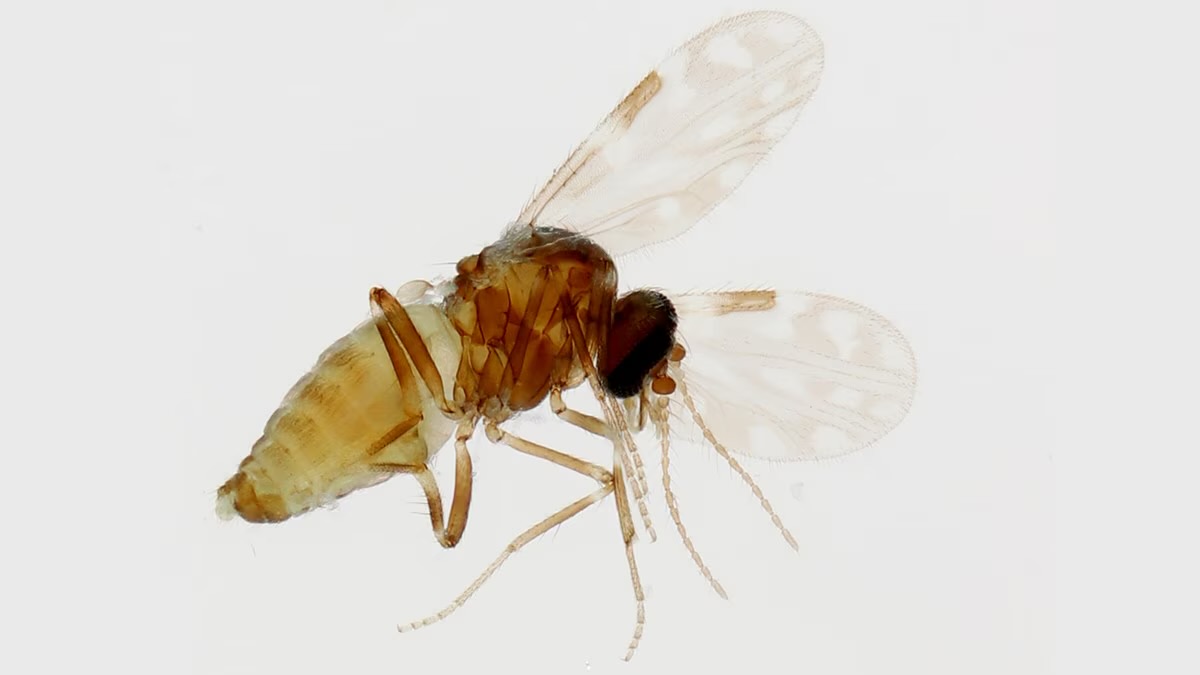The little-known Oropouche virus is causing concern among public health experts. More than 10,000 cases have been identified this year, mainly in South America and the Caribbean. The virus is spreading to the US: 94 cases have been identified for 2023-2024, according to data from the Centers for Disease Control and Prevention. In two of the cases, Oropouche had infected the brain, causing either encephalitis or meningitis. All of the 94 cases were associated with travel, according to the CDC.
Dr. Peter Chin-Hong, an infectious diseases specialist at the University of California, San Francisco, discussed the emerging threat of Oropouche in an interview with Ethnic Media Services.
How did the Oropouche virus emerge? When and where was it first found?
Oropouche virus was first described in the village of Oropouche, in the eastern part of the Caribbean island of Trinidad (my home country!). The first outbreak in a population was also described in 1961 in Brazil, and throughout the years has caused outbreaks in many countries in Central, South America and the Caribbean such as Panama, Brazil, Peru, Colombia, Bolivia, French Guiana, Ecuador and Haiti.
The Oropouche virus is getting a lot of attention this year because the geographic reach and intensity of the outbreaks are increasing: Brazil and neighboring countries have reported over 10,000 cases this year alone, and Cuba has reported its first case. In addition, travelers from endemic countries to the United States have been diagnosed with infection.
Is Oropouche related to Covid or any other known virus?
It has no relationship to COVID. However it is related to some viruses that can cause brain infections in humans that we can see in the US like the California encephalitis virus and the La Crosse virus.
How is the virus transmitted?
It is transmitted from biting small insects called midges (a small biting fly), also known as “no see-ums” because these insects are so small. Infected midges bite humans and transmit disease that way. These insects may also bite monkeys, sloths and birds and so sustain the transmission cycle but some of these details are not fully worked out as yet. Mosquitoes can also be implicated in the transmission cycle though the midges are the primary vector. Given the possibility of birth defects and fetal demise (see below), we also worry specifically about pregnant people.
The virus can also be transmitted from mother to child. It is also likely that sexual transmission can occur as the virus was found in an infected person’s semen.
What are the symptoms of Oropouche, and how long does the illness last?
After being bitten by an infected midge, humans develop disease in about 3-10 days. Most people (60%) develop symptoms such as the abrupt onset of fever with chills, headache, muscle aches, joint pain and a spotty rash all over the body. These are the most common symptoms. Some people also experience “pink eye” or conjunctivitis and gastrointestinal symptoms like nausea, vomiting and diarrhea. Bleeding of the gums, stool and other areas have also been described in a small proportion of patients. The illness usually lasts about 5 days.
One of the interesting clinical features of Oropouche virus is that a large proportion of patients (70%) may have recurrent symptoms after recovery. This does not represent new infection and is likely similar to COVID rebound.
One of the other clinical features that is being followed very closely is fetal death and microcephaly (a small infant head size, like what we saw in Zika) also has not been reported as commonly yet.
Is Oropouche fatal?
Oropouche infection is rarely fatal. Of about 8000 cases summarized recently by the Morbidity and Mortality Weekly Report by the CDC, 2 deaths were reported.
Are there treatments for Oropouche currently available? Will existing vaccines for Covid/flu/RSV also protect against Oropouche?
Unfortunately no drugs are available for Oropouche virus disease. Treatment is generally supportive like giving fluids. No existing vaccines work.
At the moment, Oropouche seems to be confined to South America. Do you expect to see a lot of cases in the US next year? Will it emerge in pandemic-like proportions?
I think we will continue to see more cases in the US mainly from travelers returning from endemic countries in Central America, South America and the Caribbean. I don’t think we will see pandemic like proportions of disease but that doesn’t mean that a lot of people will not get infected and be taken out of the workforce and schools in affected countries.
We have the species of that midge in warmer states in the US east of the Mississippi but it will unlikely so far to mimic the exact rural ecological scenario where this disease can be endemic here.
What advice would you give to our readers to protect themselves from Oropouche, particularly if they are traveling to South America?
Some of the interventions we use to prevent mosquito bites should be used as the minimum safety measures (insect repellant, mosquito nets, screens, cover skin using long sleeves and pants when feasible, don’t sleep near to where midges breed like decaying banana trees and cocoa stumps in rural areas).
However, it is not known how well these interventions work against midges because they are so small and more research is needed to determine this as well as how well our mosquito repellants work. However, at a minimum these interventions will likely lower the risk of infection.
Another way travelers could be helpful when returning to the US from affected countries in South and Central America is to bring up this possibility with clinicians. Dengue, Zika and Chikungunya can look very similarly and many clinicians in the US do not know about Oropouche virus.
If someone is pregnant with infection, the CDC recommends serial ultrasounds every four weeks given the possibility of birth defects and fetal demise. The CDC has also recommended that male travelers returning from affected countries consider using condoms or abstain from sex for 6 weeks if they have been infected.




